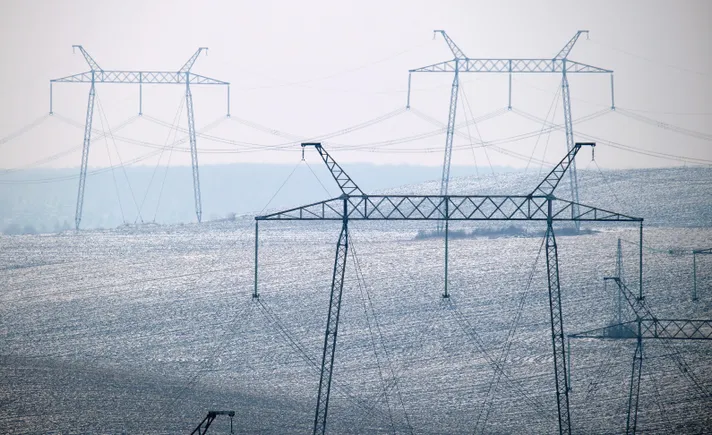
Spain is boosting generation from costlier gas-fired power plants in the wake of a nationwide blackout that raised concerns about the grid’s ability to cope with an abundance of renewable energy.
The output of combined-cycle gas turbines, a more steady generation technology than solar, jumped 37% in the two weeks after the outage, compared with the two weeks prior, data from power grid operator Red Electrica show. Their average share of Spain’s power mix increased to 18% from about 12%.
The collapse of Spain’s power grid left millions without electricity, telephone communication, trains and traffic lights for hours on April 28, including in neighboring Portugal and parts of southern France. The government is still investigating the causes of the blackout, and hasn’t yet clarified which technology was at fault and why, or who’s to blame.
Additional CCGTs “are currently being included to reduce the impact that an abrupt output change may have over voltages,” Red Electrica said in response to questions.
Following strong oscillations in the grid, about 2.2 gigwatts of capacity went offline in the south of Spain less than a minute before the complete collapse of the Iberian Peninsula’s electricity systems, Deputy Prime Minister Sara Aagesen told lawmakers last week.
RBC Capital Markets analysts were among those saying that the most likely culprits were solar farms due to a lack of grid-forming inverters that help stabilize photo-voltaic output.
Aagesen said in an interview to Spanish radio station RNE on Thursday that pointing the finger at solar and the grid’s ability to deal with so much renewable energy is “simplistic.” The system is robust and has had many days with as much or more solar in the mix than on the day of the blackout, she argued.
Still, energy regulator CNMC head Cani Fernandez told lawmakers that the system is currently working with more expensive backup mechanisms that would adjust more promptly to unwanted oscillations. That’s a good description of CCGTs versus solar.
“It seems that Red Electrica wants to have tight control over the generation mix to stabilize it” said Javier Pamos, an analyst at Aurora Energy Research. “Combined-cycle plants are being included in it even though there are hours of the day when they wouldn’t be necessary as renewable production is enough to cover demand.”
CCGTs can be a source of around-the-clock generation, and turbines also provide kinetic energy to the grid, a key element needed to keep the network stable. The day after the blackout, their output soared to 216 gigawatt-hours, a 157% jump compared to the day before the outage, and over three times more than two days before.
Although the grid operator’s mandate is to meet demand at the lowest possible cost, it can also modify the generation mix to maintain an “adequate voltage profile,” Red Electrica said.
The use of CCGTs is probably adding between €5 and €10 per megawatt-hours to costs, according to Javier Revuelta, senior principal at energy consultancy AFRY AB, who estimates that as many as 2 gigawatts of extra gas-fired capacity is being added daily to the Spanish mix compared to the days before the blackout.
The extra costs incurred to replace solar with gas for the sake of stability don’t necessarily show in wholesale electricity prices because they are part of adjustments that take place after trading is cleared. They will, however, impact consumer bills.
The government has come under attack because reports show that Red Electrica and the CNMC had been discussing for two years the need to upgrade the system’s ability to balance voltage swings.
Aagesen said that the procedures to consider upgrades were taking their normal course and that if the CNMC had assessed a high risk of an event like last month’s blackout, it would have sped them up and warned the ministry, which didn’t happen.
“Nobody saw it coming,” she said.
WHAT DO YOU THINK?
Generated by readers, the comments included herein do not reflect the views and opinions of Rigzone. All comments are subject to editorial review. Off-topic, inappropriate or insulting comments will be removed.
MORE FROM THIS AUTHOR
Bloomberg



















